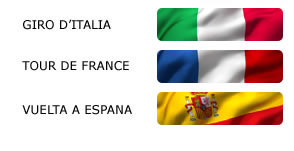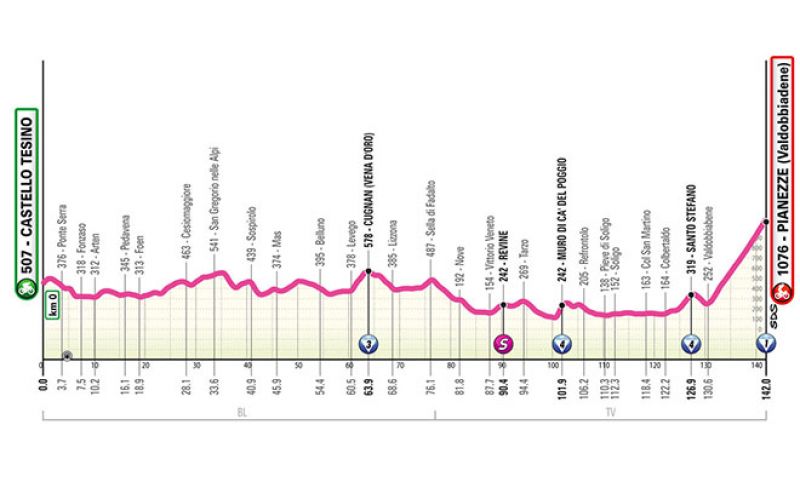

On the fourth day of the race, the pink caravan will cross the provinces of Belluno and Treviso for a stage - the Castello Tesino - Pianezze of 142 km - which promises to be truly exciting and unpredictable.
to follow the live coverage of the entire stage starting at 10:35 CLICK HERE
After the start from Castello Tesino, there won't be a moment to catch one's breath, then for the athletes it will be a continuous up and down, but the official climbs are only 4: the Vena d'oro climb, the famous Muro di Ca' del Poggio, Santo Stefano, and the final climb. After many kilometers of leg-breaking effort, the group will tackle the 11.4 kilometers leading to Pianezze, with an average gradient of 7.2% and peaks reaching 11%. This is the second mountain finish of the Giro Women 2025 and could generate a true shake-up of the general classification.
THE TERRITORY. The Grifone del Tesino will symbolically lower the start flag for the fourth stage of the Giro Women. The Land Art work created by artist Marco Martalar using roots and wood from the Vaia storm that hit the plateau in October 2018 dominates the Tesino plateau at the easternmost edge of Trentino. Just after the start from Castello Tesino, one enters Veneto, on whose roads a special day will be experienced, with the variety of environments traversed before the expected white-knuckle duel on the final climb.
First mandatory stop in Feltre, actually just skirted by the race. The postage stamp city, a historic crossroads of trade between the Venezie and Trentino, which has cultivated the cult of beauty over the centuries. Thus, the defensive walls encircling the hill on which the historic city center sits have become useless, and one can now walk among historic palaces, churches, and monuments of great value. Via Mezzaterra is the Renaissance heart of the city, the most seductive: it should be walked in its entirety up to Piazza Maggiore.
Three kilometers from Feltre is Pedavena with its magnificent noble villas that between the 17th and 18th centuries hosted much of the Venetian nobility. From here, one ascends the Piave valley, staying mid-slope near the last Dolomite foothills until reaching Cesiomaggiore, home to the interesting Toni Bevilacqua Historical Bicycle Museum, where dozens of historic bikes and memorabilia belonging to great cycling champions can be admired. After passing the Vedana Charterhouse, a grand 15th-century monastic complex now inhabited by cloistered nuns of the Order of Saint Bruno, one arrives in Belluno. If time is short, it's worth starting to know the quiet Venetian city from its squares: Piazza Duomo with the Cathedral, Palazzo dei Rettori a memory of Venetian domination, and Palazzo dei Vescovi; Piazza dei Martiri (or Piazza Campedel) the city's living room; and the characteristic Piazza delle Erbe where a small fruit and vegetable market still takes place today.
A leap into the past is also made in Cugnan, already famous in distant times for the beneficial springs of Vena d'Oro, around which a historic thermal location was created with palaces and gardens of great suggestion.
In Vittorio Veneto, one enters the extraordinary world of Prosecco vineyards that will accompany the route to the day's finish. Rows and hills, cellars and wine bars: the common thread of these final kilometers, however, leaves room for some distractions. Among these are the two enchanting lakes of Revine, the 16th-century Molinetto della Croda in Refrontolo, the Ca' del Poggio climb, now a cult place for Venetian cyclists, the Villa dei Cedri and the Church of San Floriano in Valdobbiadene. From the town considered - along with nearby Conegliano - the capital of prosecco, one climbs the slopes of Monte Cesen up to Pianezze where the finish line banner is located.
Right here, in a former military position, the International Temple of the Donor has been set up, making the site a symbol of peace and solidarity.

Se sei giá nostro utente esegui il login altrimenti registrati.